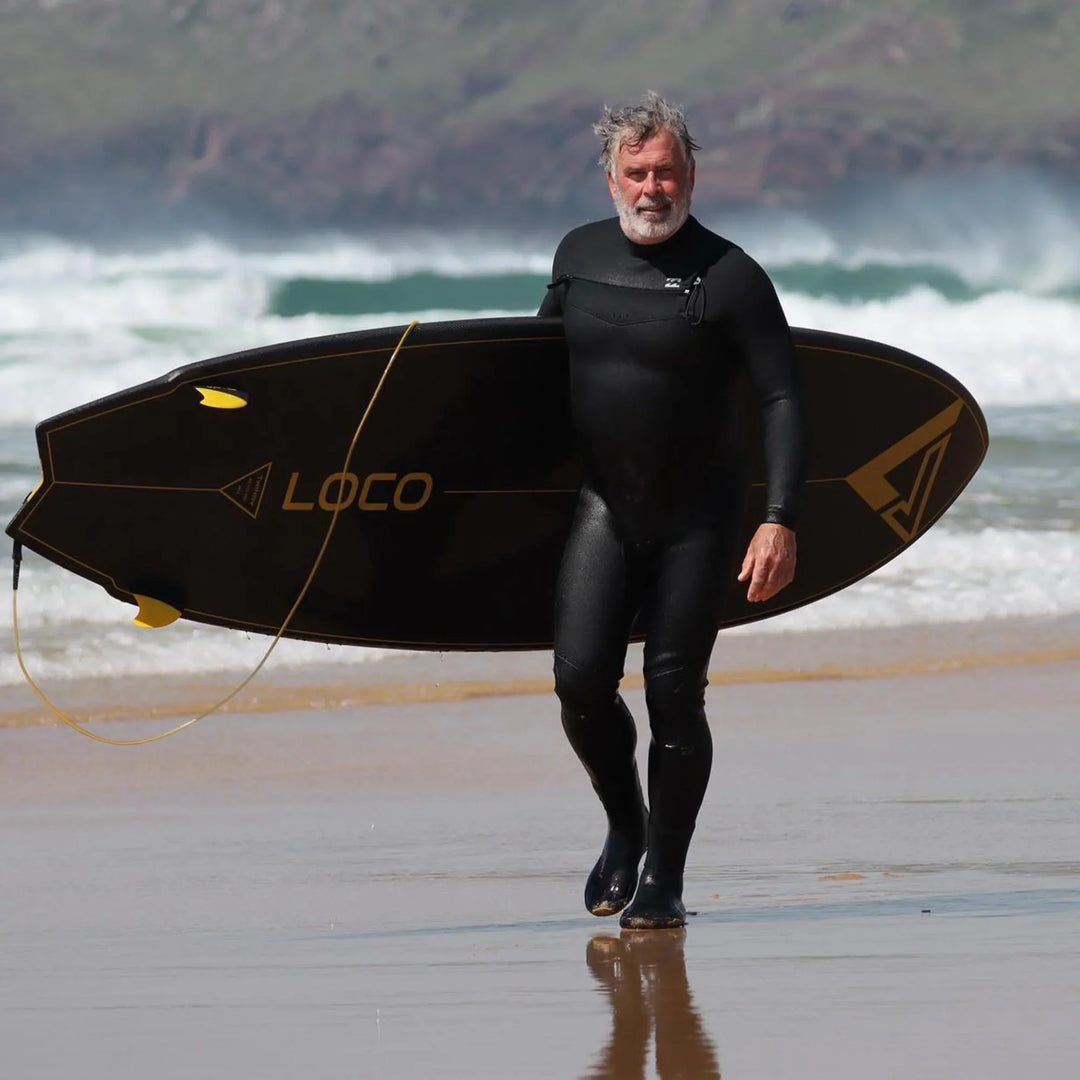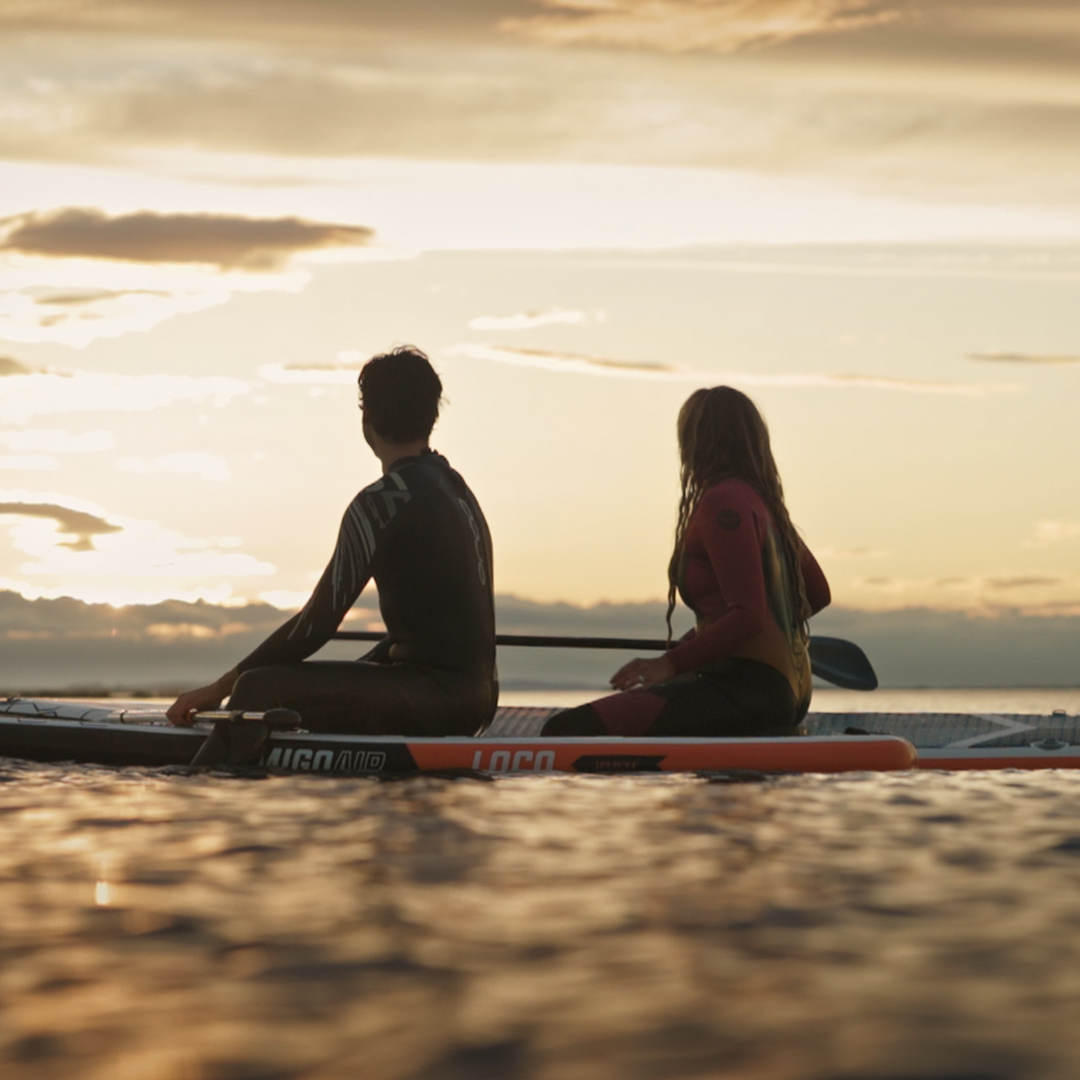Essential Weather Knowledge for Paddle Board Safety in 2024

Essential Weather Knowledge for Paddle Board Safety in 2024
Paddleboarding, often referred to as SUP (Stand Up Paddleboarding), is a fantastic way to enjoy the water, get a full-body workout, and experience the tranquility of nature. As with any water sport, understanding the weather and learning essential safety techniques is crucial for a safe and enjoyable paddleboarding experience. In this comprehensive guide, we'll explore essential weather knowledge, including offshore winds, rip tides, and self-rescue techniques specifically for paddleboarding beginners. Whether you're new to paddleboarding or looking to refresh your skills, this article will help you stay safe and confident on your paddle board.
Understanding Critical Weather Conditions for Safe Paddle Boarding
Weather plays a significant role in paddleboarding, affecting not only your safety but also your overall experience on the water. Here are key weather elements every paddleboarder needs to be aware of:
Understanding Offshore Winds for Paddle Boarders
Offshore winds blow from the land out to the water. While they might seem harmless on a calm day, they can quickly become dangerous for paddleboarders. These winds can swiftly push you and your paddle board away from shore, making it incredibly difficult to return.
- Identification: Always check the direction of the wind before you head out. Offshore winds can be identified if you feel the wind at your back when facing the water.
- Safety Tip: Avoid paddleboarding in offshore winds, especially if you're a beginner. If you must go out, stay very close to the shore and consistently keep an eye on your position relative to the land to ensure you can get back to your paddle board's starting point safely.
Onshore Winds and Your Paddle Board Safety
Onshore winds blow from the water toward the land. These winds are generally safer for paddleboarders as they inherently push you back towards the shore, offering a natural safety net for your paddle board.
- Identification: You'll feel the wind on your face when you're looking at the water.
- Safety Tip: While onshore winds are safer, they can create choppy conditions. Ensure your paddleboarding skills are up to handling the potential waves before heading out on your SUP.
Identifying Rip Tides for Paddle Board Safety
Rip tides, or rip currents, are strong, narrow currents flowing from the shore out to sea. They can occur at any beach with breaking waves and pose a significant danger to paddleboarders, potentially pulling you away from your SUP.
- Identification: Look for areas where waves are not breaking consistently, or where there is a noticeable difference in water color or debris moving out to sea, indicating a potential rip current affecting your paddle board's path.
- Safety Tip: If caught in a rip tide, remain calm. Paddle parallel to the shore to escape the current's grip, then head back to land once you're out of the strongest flow. Never try to paddle directly against the current on your paddle board.
Monitoring Weather Forecasts for Safe Paddle Boarding
Before you head out on your paddle board, always check the weather forecast. Look for comprehensive information on wind speed and direction, wave height, tides, and any weather advisories specific to paddleboarding. Several apps and websites provide detailed marine forecasts, which can be invaluable for planning a safe and enjoyable paddleboarding session.
-
Popular marine forecast resources include:
- Windy: Offers detailed wind maps and forecasts, crucial for SUP planning.
- NOAA Weather: Provides comprehensive marine forecasts relevant to paddleboarders.
- BBC Weather / Met Office: Reliable general weather forecasting with marine sections.
- Surfline: Detailed surf and tide forecasts, especially useful for wave-focused paddleboarding.
Understanding the forecast will help you choose the best time and location for paddleboarding, ensuring a safer and more enjoyable experience on your SUP.
Essential Self-Rescue Techniques for Paddle Boarders
Even with the best preparation, unexpected situations can arise when paddleboarding. Knowing how to perform self-rescue techniques is crucial for every paddleboarder's safety. Here are some essential techniques to master to stay safe on your SUP.
Re-Boarding Your Paddle Board Efficiently
Falling off your paddle board is a common part of the learning process. Knowing how to get back on your SUP board efficiently is vital for maintaining safety and momentum.
-
Steps:
- Position yourself next to your board near the center.
- Grab the handle or the opposite edge of the board.
- Kick your legs to help lift your body onto the board.
- Once your chest is on the board, rotate your body and swing your legs up onto your paddle board.
Handling Fatigue While Paddle Boarding
Paddling can be tiring, especially for beginners. Knowing how to manage fatigue can prevent dangerous situations from escalating when you're on your paddle board.
-
Steps:
- Sit or kneel on your board to take a break from standing.
- Use the paddle to maintain your position and direction.
- If you're far from shore and too tired to paddle back, signal for help by waving your paddle to attract attention.
Dealing with Equipment Issues on Your SUP
Sometimes paddleboarding equipment can fail or be lost. Knowing what to do in these situations is essential for your safety and successful return to shore on your paddle board.
-
Steps:
- If you lose your paddle, lie down on your board and use your arms to paddle back to shore. Your SUP itself offers significant buoyancy.
- If your leash breaks, stay calm and try to retrieve your board. Use swimming strokes like freestyle or backstroke if necessary to reach your paddle board.
Essential Paddle Board Safety Gear
Having the right safety gear can make a significant difference in an emergency when paddleboarding. Here’s what every paddleboarder should have to ensure a safe SUP session:
- Personal Flotation Device (PFD): Wearing a PFD is essential, especially for beginners. It helps you stay afloat and can be a lifesaver in emergencies, providing crucial support when separated from your paddle board.
- Leash: A leash keeps you connected to your board, which provides buoyancy and makes it easier to get back on if you fall off. It's a non-negotiable piece of SUP safety gear.
- Whistle and Light: A whistle can help you attract attention if you need assistance, while a waterproof light can be crucial for visibility in low-light conditions, enhancing your paddle board safety.
- First Aid Kit: Having a small, waterproof first aid kit on your board can help you manage minor injuries, ensuring small issues don't become bigger problems while paddleboarding.
Paddleboarding Etiquette and Environmental Awareness
Respecting the environment and other water users is part of being a responsible paddleboarder. Here are some tips to keep in mind when out on your SUP:
- Respect Wildlife: Avoid disturbing marine life and keep a safe distance from animals. Never feed or touch wildlife, preserving their natural habitat around your paddle board routes.
- Leave No Trace: Carry out all trash and leave the environment as you found it. Use biodegradable products to minimize environmental impact from your paddleboarding activities.
- Share the Water: Be aware of other water users, including swimmers, surfers, and boaters. Maintain a safe distance and follow local waterway rules to ensure everyone's safety around your paddle board.
Advanced Weather Knowledge for Experienced SUP Enthusiasts
For those looking to deepen their understanding of weather conditions and enhance their paddleboarding skills, here are some advanced topics to consider:
Understanding Tides for Your Paddle Board Routes
Tides significantly impact paddleboarding conditions. High tides can provide deeper water and easier navigation, while low tides can expose rocks and other hazards that might damage your paddle board.
- Safety Tip: Plan your paddleboarding sessions around tidal schedules. Use tide charts and apps to track high and low tides in your area, crucial for safe SUP navigation.
Wave Dynamics and Paddle Boarding
Waves are generated by wind and can vary in size and frequency. Understanding wave dynamics can help you navigate and enjoy different water conditions safely on your paddle board.
- Safety Tip: Beginners should start in areas with smaller waves to build confidence and skills. As you become more experienced, you can explore larger waves and surf zones with your paddle board.
Recognizing Weather Patterns for Optimal SUP Safety
Familiarizing yourself with local weather patterns can significantly enhance your paddleboarding experience. Understanding how different weather systems affect your area will help you anticipate changes and prepare accordingly for your SUP outings.
- Safety Tip: Learn about common weather phenomena in your region, such as afternoon thunderstorms, seasonal wind patterns, and temperature fluctuations, all of which impact paddleboard safety.
Paddleboard Maintenance for Longevity
Taking care of your paddleboard and gear ensures longevity and optimal performance. Here are some maintenance tips for your SUP:
- Cleaning: Rinse your paddleboard with fresh water after each use to remove salt, sand, and debris. Use mild soap and a soft brush for thorough cleaning to keep your SUP in top condition.
- Storage: Store your paddleboard in a cool, dry place away from direct sunlight. Use board bags or covers to protect it from scratches and UV damage, preserving your SUP's integrity.
- Inspection: Regularly inspect your paddleboard, paddle, and safety gear for signs of wear and damage. Repair or replace any damaged items to maintain safety and performance for your paddleboarding adventures.
Building Advanced Paddleboarding Skills
As you gain more experience, you can focus on building your paddleboarding skills. Here are some advanced techniques to work on for your SUP journeys:
- Improving Balance: Balance is key to paddleboarding. Practice yoga or balance exercises to strengthen your core and improve stability on your board.
- Efficient Paddling: Learn and practice different paddling techniques to increase your efficiency and stamina. Mastering the forward stroke, sweep stroke, and draw stroke will enhance your maneuverability on your SUP.
- Navigation Skills: Understanding basic navigation principles can help you explore new areas safely. Learn how to read nautical charts, use a compass, and recognize landmarks for orientation when paddleboarding.
Joining the Paddleboarding Community
Being part of a community can significantly enhance your paddleboarding experience. Here are some ways to connect with other paddleboarders:
- Local Clubs and Groups: Join local paddleboarding clubs or groups to meet like-minded enthusiasts, share experiences, and participate in group outings with your SUP.
- Online Forums and Social Media: Engage with the global paddleboarding community through online forums, social media groups, and dedicated websites. These platforms offer valuable tips, advice, and support for your paddleboarding journey.
- Events and Competitions: Participate in paddleboarding events and competitions to challenge yourself, improve your skills, and enjoy the camaraderie of the sport.
Conclusion: Staying Safe and Confident on Your Paddle Board
Paddleboarding is an exhilarating and rewarding activity that offers a unique way to explore the water. By understanding essential weather conditions like offshore winds and rip tides, mastering self-rescue techniques, and using proper safety gear, you can ensure a safe and enjoyable experience on your paddle board. Always check the weather forecast before heading out, respect the environment, and stay aware of your surroundings. With these tips, you'll be well-prepared to enjoy paddleboarding in 2024 and beyond. Whether you're a novice or looking to refresh your knowledge, staying informed and prepared will help you make the most of your time on the water. Happy paddleboarding




